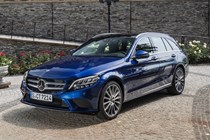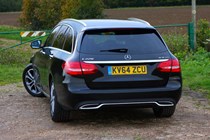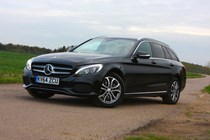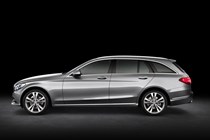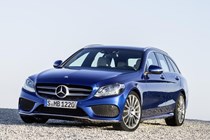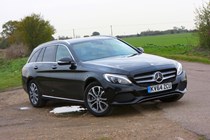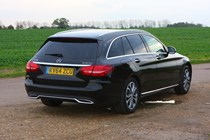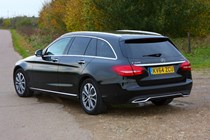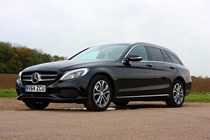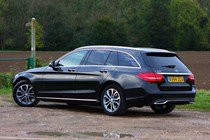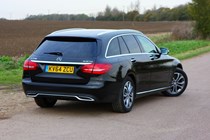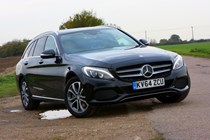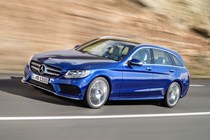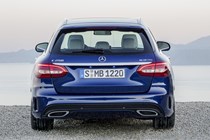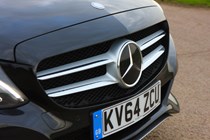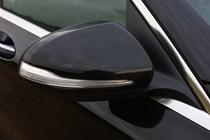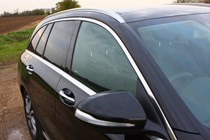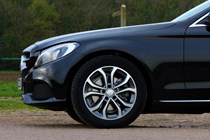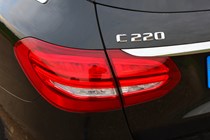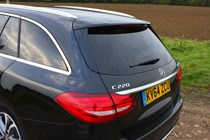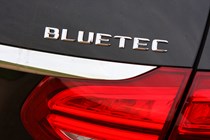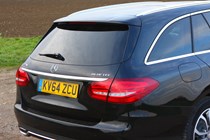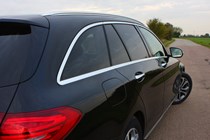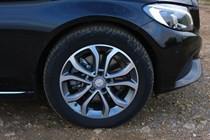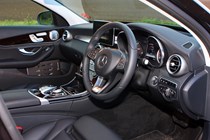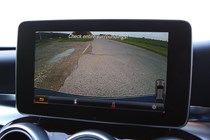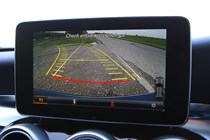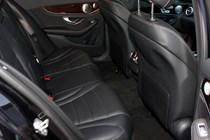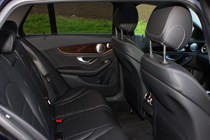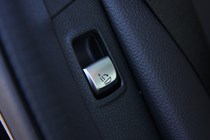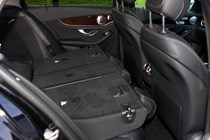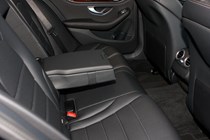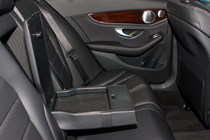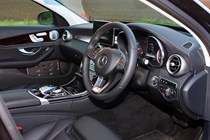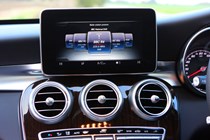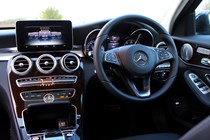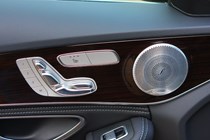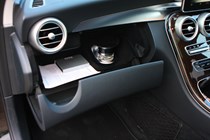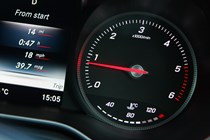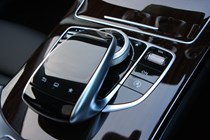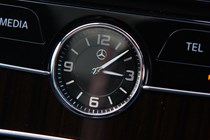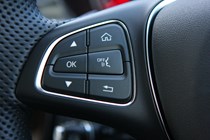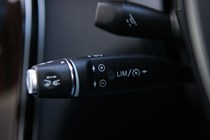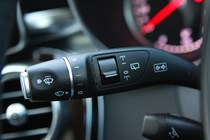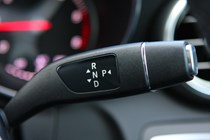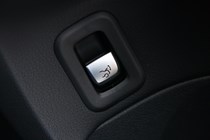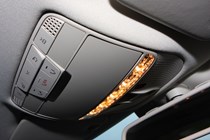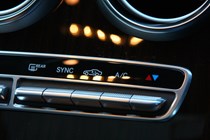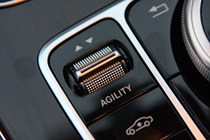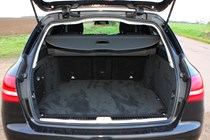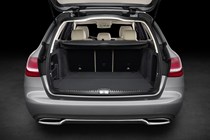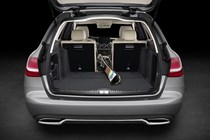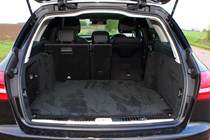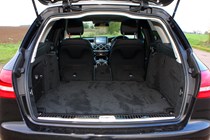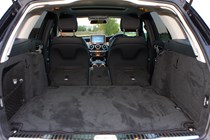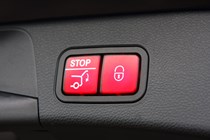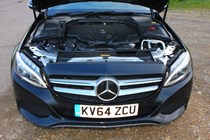
Mercedes-Benz C-Class Estate (2014-2021) engines, drive and performance
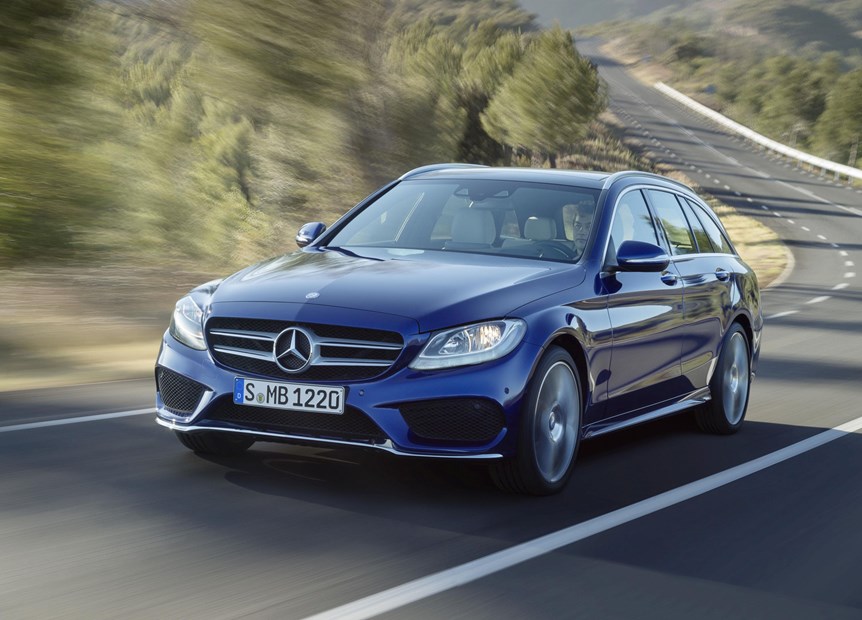
At launch there will be three engines taking care of Mercedes-Benz C-Class estate performance, though a further pair will join the trio a little later. Made up of three diesel, one petrol and one diesel-hyrbid engine it will be the former that will make up the majority of sales here in the UK.
Petrol engines
Lets get this out of the way first; here in the UK if you want to avoid filling up at the black pump then there’s only one choice, the C200 petrol. It’s actually quite an efficient choice, offering a possible 51.4mpg and emitting just 128g/km of CO2 – numbers not that far off some of the diesel models.
In terms of outright performance this four-cylinder engine develops 181bhp and 300Nm of torque, the latter available from 1,200 to 4,000rpm thanks to its turbocharged layout. That allows the C200 petrol, with six-speed manual gearbox, to complete the benchmark 0-62mph sprint in a credible 7.5 seconds, while top speed is 145mph.
Diesel engines
If you want real midrange muscle it’s the diesel engines you need to be looking at, specifically the C250 BlueTEC which develops 500Nm of torque (and 210bhp). That peak torque figure is only on-tap for a small period, but the 2.1-litre four-cylinder engine allows the lifestyle estate to punch its way from 0-62mph in just 6.9 seconds.
Considering it only emits 117g/km and can achieve over 60mpg with a (very) light foot, that’s a set of impressive numbers. The good news is this engine performs just as well on the road, despite the occasional clattering noise at start-up and when worked hard.
There is another option though; the C220 BlueTEC is the same engine (2.1-litre four cylinder) that has been slightly down-tuned. That means it only pumps out 168bhp and a still useful 400Nm of torque – the latter available for a larger spread of the power band than on the C250 BlueTEC – and takes 7.9 seconds to finish the 0-62mph sprint.
In actual fact it’s the C300 BlueTEC Hybrid that is the fastest of the lot for now though, which uses the same diesel engine as the C250 BlueTEC but supplements it with a 27bhp electric motor. It’s also the cleanest of the lot with sub 100g/km CO2 and can achieve 74mpg.
If you’re less keen on performance there is a new 1.6-litre four-cylinder diesel, named C200 BlueTEC, which develops 134bhp and 300Nm, and takes 10.1 seconds to finish the benchmark 0-62mph sprint. At least CO2 emissions (112g/km) and average economy (65.7mpg) are impressive.
Gearboxes
There will be manual gearboxes available on the new Mercedes C-Class estate, but we haven’t driven any yet – and to be fair the firm expects 85 percent of cars sold to be equipped with its 7G-Tronic seven-speed automatic gearbox instead. It’s a cracking gearbox, shifting smoothly and quickly up the ratios when left to its own devices, only occasionally losing its crispness when asking for manual down-changes.
There’s no doubt that Mercedes-Benz C-Class estate handling is better than the car that came before it; certainly this is a C-Class that you can genuinely enjoy driving. That’s down to its new four-link front axle, which allows for higher cornering forces than before thanks to better wheel geometry under load.
Regardless of which suspension option you have – conventionally sprung or with Airmatic – the lifestyle load-lugger provides decent body control, albeit with a small amount of roll, and turn-in from the Direct-Steering system wheel is sharp. It is however lacking in the same sort of feedback and feel that you’ll find with a BMW 3 Series Touring, and as such never inspires quite as much confidence as its main rival.
Change direction too quickly though and the C-Class washes out into mundane, but safe, understeer – but only when driving very quickly indeed. It’s all controlled by a gentle release on accelerator pedal pressure though, and the electronic stability control system ensures the car never gets completely out of control anyway.
Enthusiastic drivers may be a bit disappointed to learn that there’s no way of fully disengaging this system on the C-Class estate, though you can relax its input to a degree – perfect for pulling away on muddy or icy surfaces.
There are five drive modes to choose from too; Comfort, ECO, Sport, Sport + and Individual, which can alter the suspension’s responses (as well as the steering, gearbox and even air-conditioning parameters) to optimise them to the driver’s requirements and road conditions. Individual allows the driver to fine tune and pick and choose from the different options for their perfect all-round setting.


